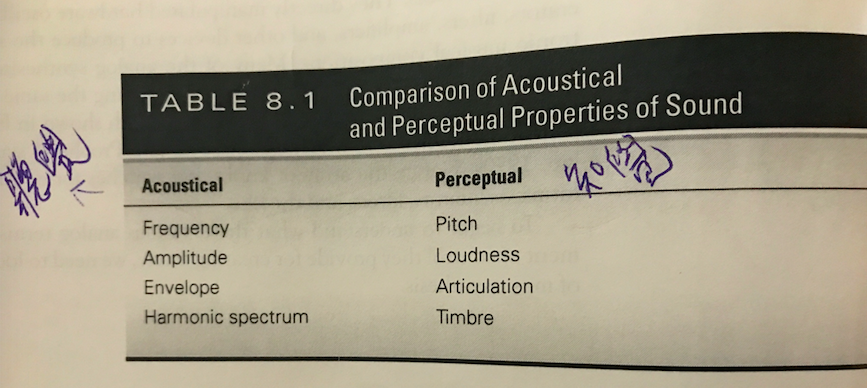Acoustical and Perceptual Dimensions of Sound
對於聲音的物理研究,在英文上我們稱做「acoustics」,為什麼音樂人要知道這個呢?因為我們透過機器或電腦製作聲音,無非是在操作、編輯聲音的物理特性,聲音透過介質震動並與我們共存。
在電腦還尚未有足夠的運算能力去創造聲音前,作曲家是依靠 music synthesizers 這種類比硬體設備(analog hardware devices),操作他們的 hardware oscillators, envelope generator, filters, amplifier 等設備去做一些電子聲音。有很多 analog synthesizers 現在已經變成一些軟體上的合成器與軟音源(soft-synths)。像 Native Instruments 出的 Pro-53,這個經典的合成器就是源自於 1970 年代的 Sequential Circuit Prophet-5 synthesizer。
談到 Acoustical 跟 Perceptual 的差異,用書上的英文句較為精確:
The acoustical properties of sound to determine its physical characteristics independently of how we hear it. We can also examine the music in terms of its perceptual properties: what we hear.
acoustical 介紹聲音的物理性質,是在講 how we hear,怎麼聽到聲音。perceptual 是屬於知覺方面,是我們聽到什麼。下面這個 table 就寫了 4 種 acoustical 與 perceptual properties 的比較:
把 acoustical 跟 perceptual 的相異處分清楚是相當重要的。當我用一些像 pitch, loudness, articulation 和 timbre (音色)這些詞去描述聲音時,we are describing how we hear and perceive the sound,我們會講說聲音太高、太低、太吵、太亮等等...用一堆形容詞但是沒有物理上的量化或是用器材去測量。這些 properties 我們可以用 frequency counters, sound-pressure level meters, oscilloscopes(示波鏡) 和電腦分析。因此一台電腦或 analog synthesizer 不會產生 pitch, loudness 和 timbre,然而這些設備會產生 frequency, amplitude, envelope, 和 harmonic spectrum 這些 physical property,下面我們會一一討論。
